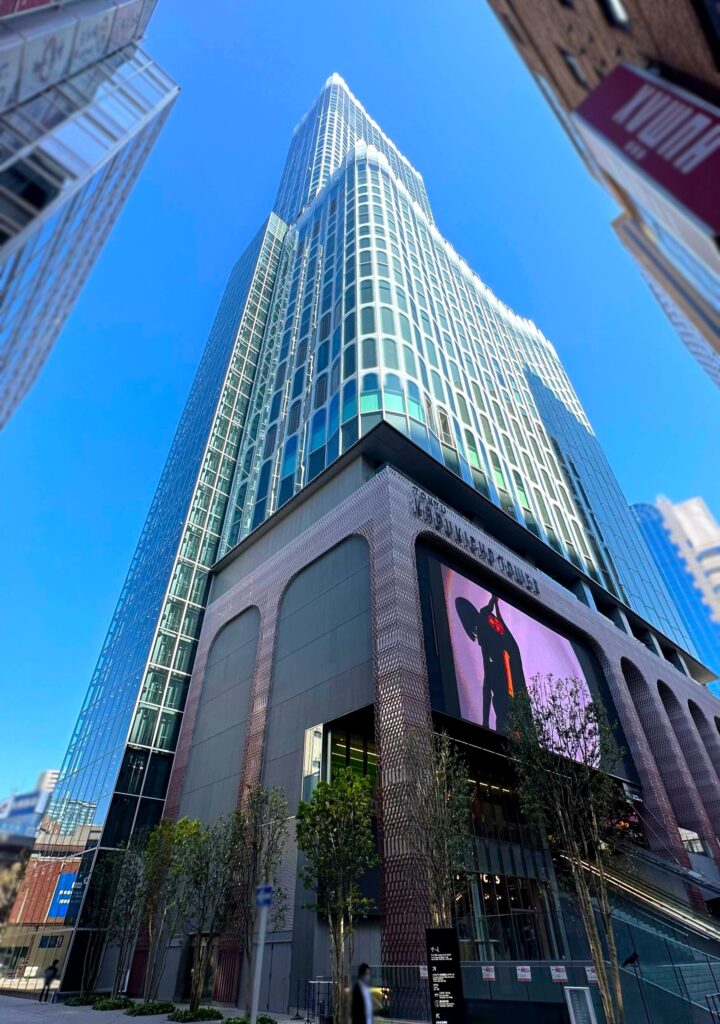Kabukicho Tower Food Court Menu is introduced here!
The main food court is “Shinjuku Kabukicho Hall – Kabukiyokocho” on the 2nd floor, where you can enjoy gourmet foods from all over Japan, but there are various food courts on other floors as well, so here are the menus for each floor!
Food Code Menu on the 1st floor
There are two places on the first floor where you can relax while enjoying food and drink: “Kabukicho Tower Starbucks” and “Wagyu Special Zone”!
I think the menu at Starbucks needs no special introduction, so I will introduce the menu at “Wagyu Tokku”.
Kabukicho, Shinjuku – 100% Wagyu Beef Patty Hamburger

Kobe Beef

Menu of Food Code on 2F
Now, I would like to introduce the menu of “Shinjuku Kabuki-hall – Kabukiyokocho” on the 2nd floor!
Hokkaido Food Festival
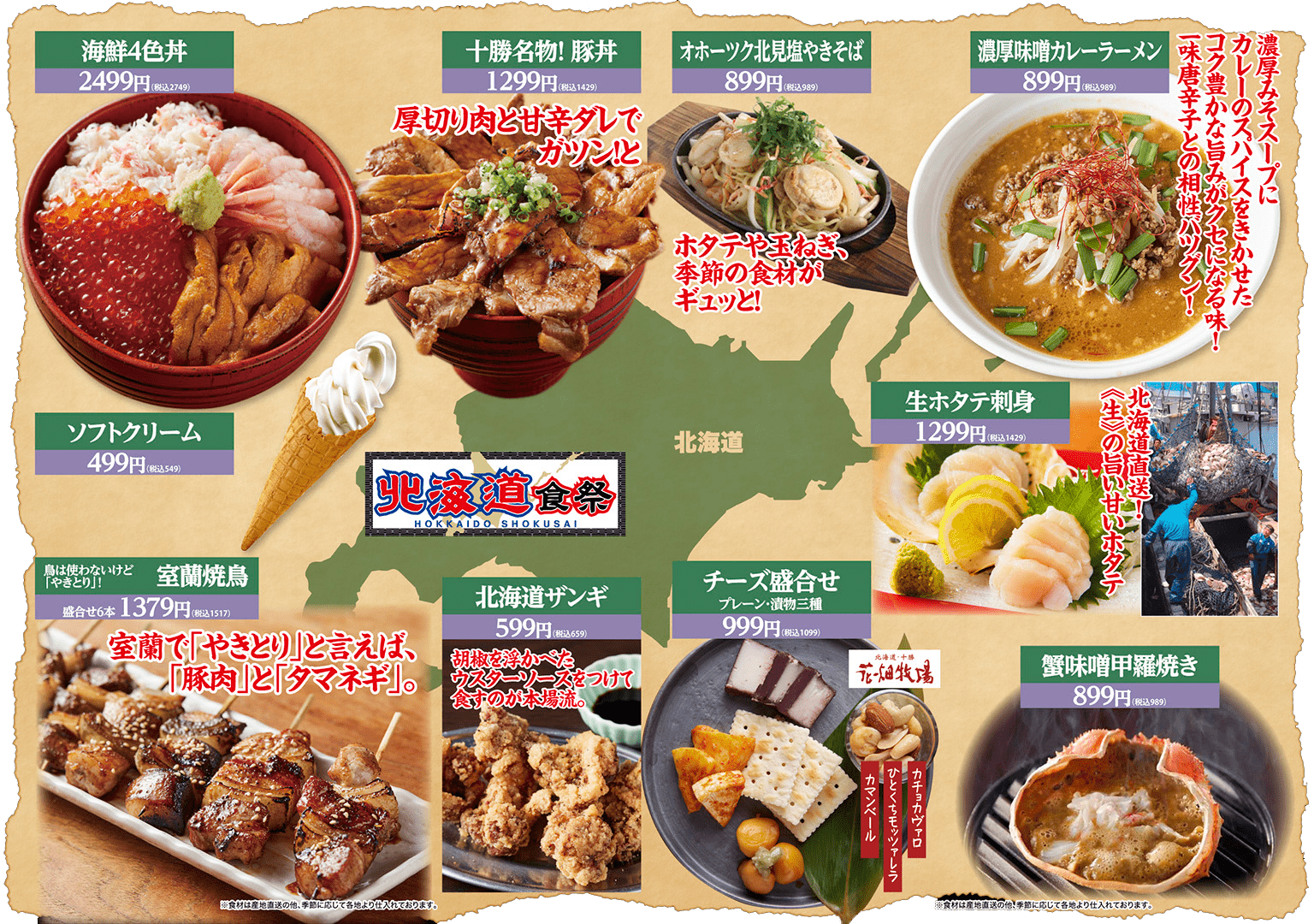
Local gourmet foods made with plenty of fresh, direct ingredients delivered directly from Hokkaido producers are flavorful and appealing. Sapporo’s curry miso ramen is a must for ramen lovers, with its spicy and rich flavor. Kaisendon, a bowl of rice topped with fresh seafood, offers a sumptuous taste, and fresh scallops directly from the sea are exquisite with their sweetness and plump texture.
Tokachi’s specialty, the pork bowl, is a hearty and satisfying dish with the appetizing aroma of pork grilled in a special sauce. Another unique local delicacy, “Muroran Yakitori,” which is made by skewering pork without using a bird, has gained popularity for its unique style and rich flavor. Zangi,” unique to Hokkaido, is fried chicken seasoned with pepper and Worcestershire sauce and characterized by its juicy meat and spicy flavor.
In addition to these prized gourmet foods, there is also a variety of local drinks unique to Hokkaido. Galana has long been loved for its unique flavor, while Ribbon Citron is a refreshingly sweet soft drink. Hokkaido wine, made from grapes grown in Hokkaido, can also be enjoyed for its rich aroma and deep flavor. By enjoying these gourmet foods and drinks, visitors can fully appreciate the charms of Hokkaido.
Tohoku Food Festival
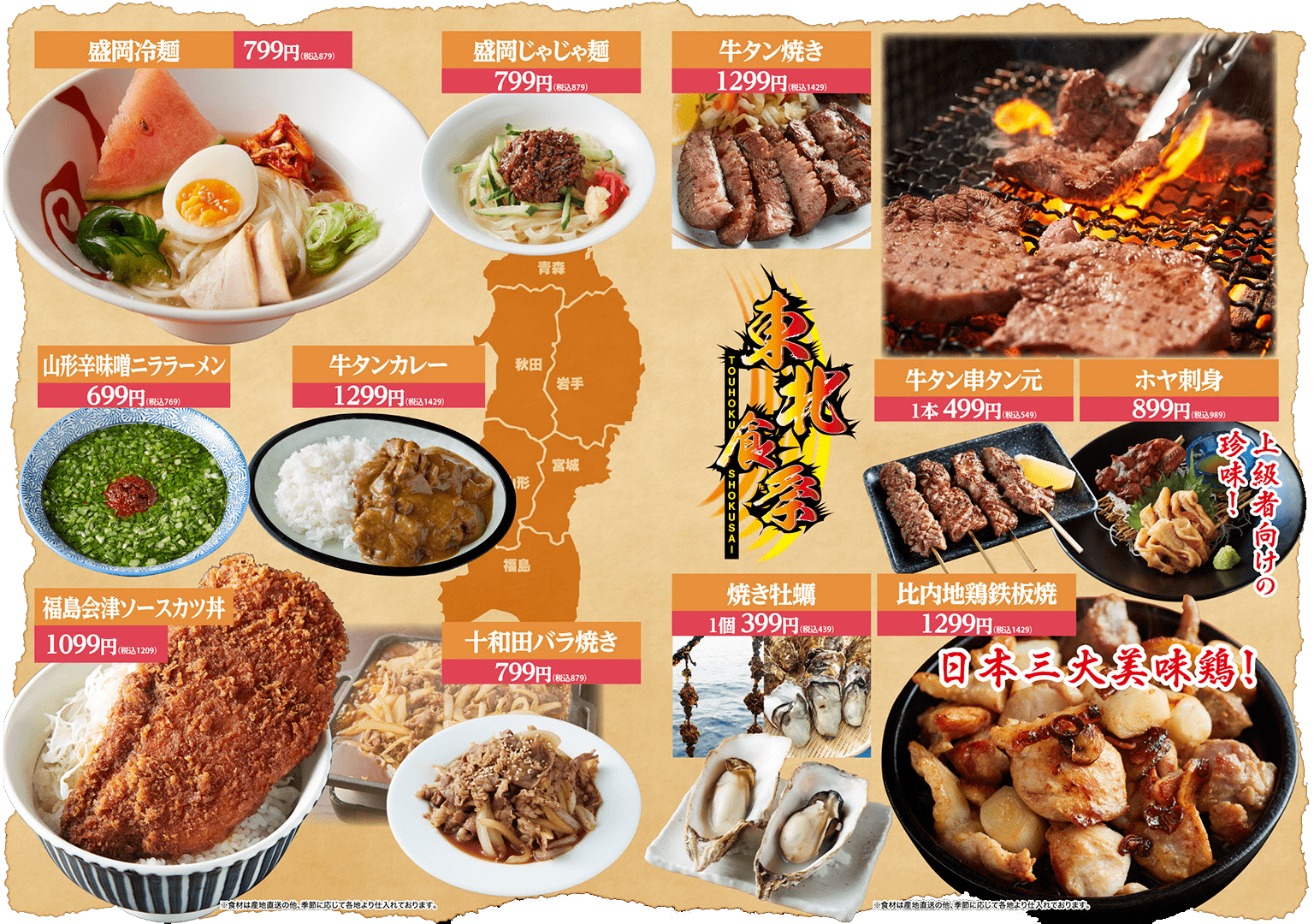
Starting with Sendai’s famous juicy and tender grilled beef tongue, the festival will also feature exquisite yakitori made from Akita Prefecture’s Hinai Jidori chicken, known as one of Japan’s three most delicious chickens; Fukushima Prefecture’s famous crispy disc dumplings; Morioka cold noodles, known for their firm noodles and spicy soup, known in Morioka; crispy sauce katsu-don (pork cutlet bowl) with plenty of sauce from the Aizu region; and The menu includes a variety of local delicacies, such as crispy saucy pork cutlet rice topped with a rich sauce from the Aizu region, harako meshi (harako rice) made with salmon and salmon roe unique to Miyagi Prefecture, and triangular fried tofu served at Mount Teiki, famous as a sacred place for matchmaking. In addition, a wide selection of local sake, such as Atago no Matsu, known as the ultimate food sake, is available for pairing with your meal. By enjoying these delicious dishes and sake, you will be able to fully appreciate the charms of the Tohoku region.
Kanto Food Festival
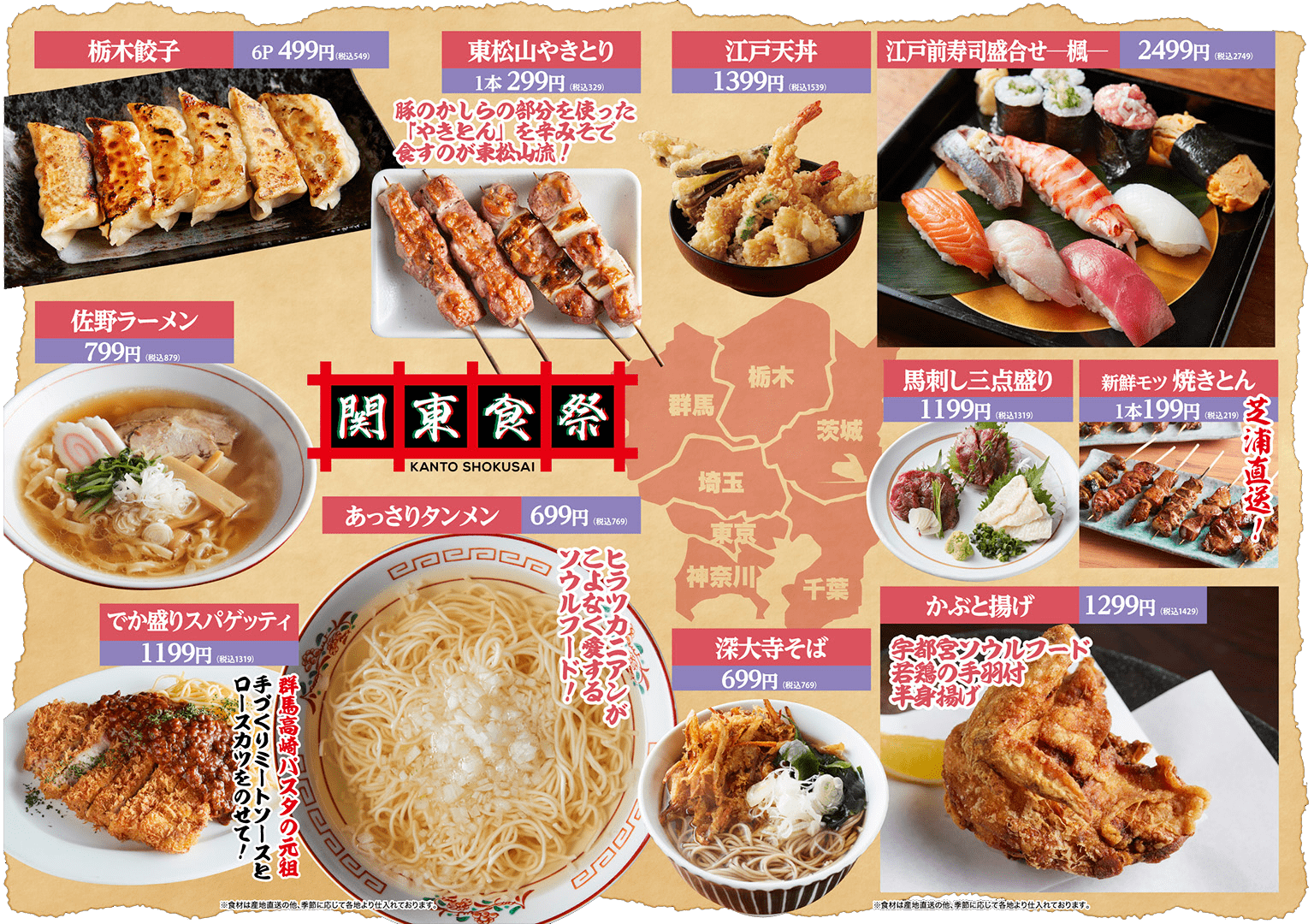
Local gourmet foods made with fresh, directly produced ingredients delivered directly from producers in the Kanto region will allow you to fully enjoy the unique flavors of the region. First, Edo-mae sushi is a traditional dish that has been around since the Edo period (1603-1868). Edo-mae sushi, made with fresh seafood and prepared by skilled artisans, is simple yet appealing with a deep flavor. Tempura, characterized by its freshly fried, crispy texture and light flavor, and soba, with its flavorful broth and smooth taste, are also well-known Edo menu items.
In addition, the yakiton, made with fresh ingredients shipped directly from Tokyo’s Shibaura Market, is a juicy dish that brings out the full flavor of the meat. The savory aroma of the grilled pork and the perfect degree of doneness will whet your appetite. Negireba, a downtown staple made with scallions and liver, is also a firm favorite, with the rich flavor of liver and the crunchiness of the scallions matching perfectly.
Don’t miss the yam, which comes directly from the production area and is unique to the Kanto region. Characterized by its stickiness and flavor, yam is also attracting attention as a healthy food. A dish using yam is excellent simply grated and served over rice, and its nourishing flavor can be enjoyed.
Another popular Kanto specialty drink is the downtown chu-hi made with Amaha no Ume, known as the original shochu high. The refreshing plum flavor of Amahane no Ume, combined with the shuwashi carbonation, provides a refreshing drink. In this way, visitors will be able to savor the richness of the local food culture of the Kanto region by enjoying these local delicacies and drinks.
Yokohama Chinese Food Festival
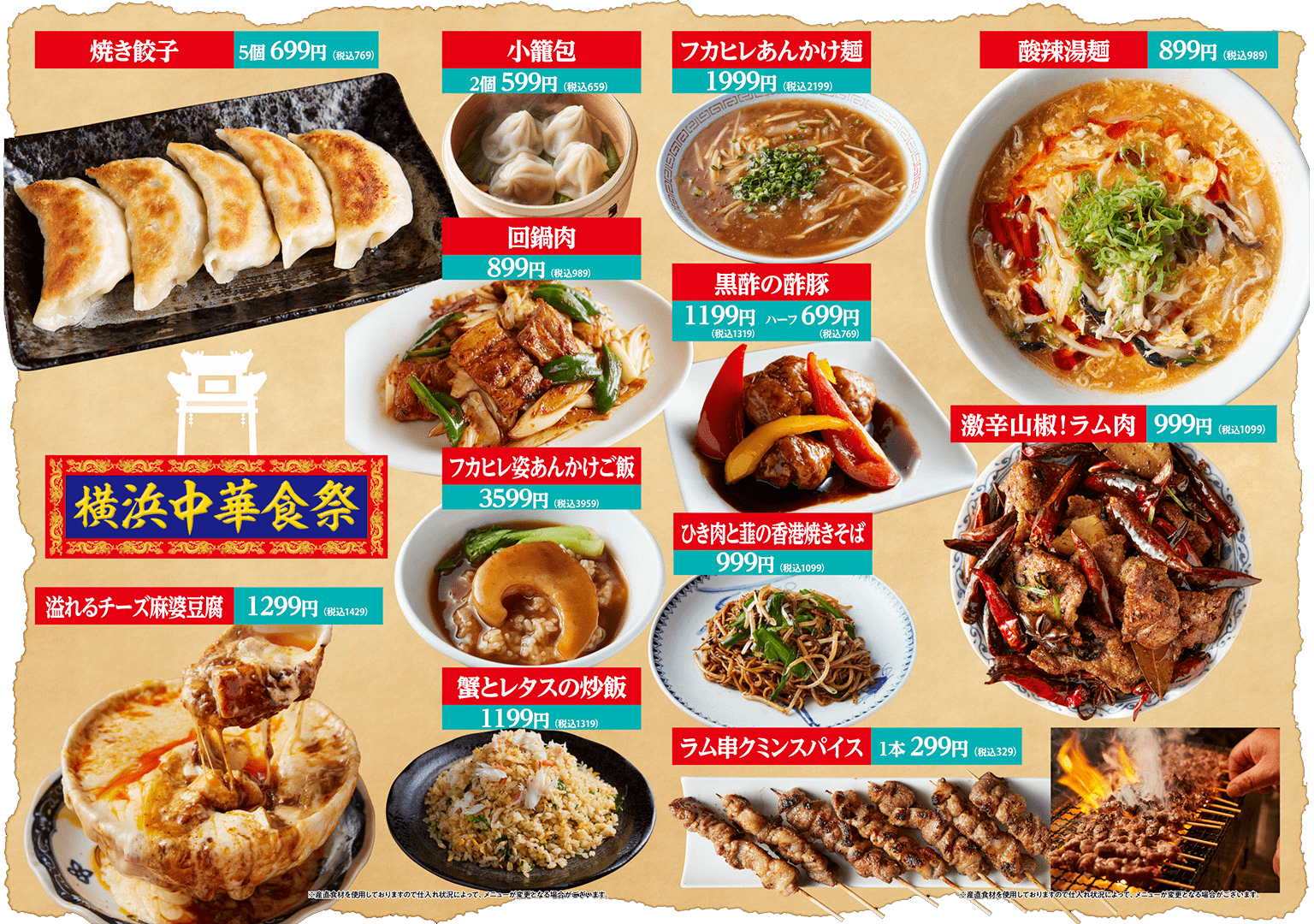
Yokohama Chinatown, one of the three major Chinatowns in Japan, offers a wide variety of menus and authentic tastes. Yokohama Chinatown is loved by many tourists and locals alike as a spot where you can enjoy royal Chinese cuisine along with the exotic atmosphere of the city.
First of all, one of the attractions of Yokohama Chinatown is its authentic Chinese menu handmade by professional Chinese chefs. From the juicy and delicious xiaolongbao, to the Peking duck with its crispy skin and juicy gravy, to the savory dumplings, all of these dishes are must-try delicacies. These dishes are enjoyed by many people because they can be enjoyed casually while still maintaining traditional cooking methods.
In addition, Yokohama Chinatown also offers a wide variety of “drinking menus” that can be enjoyed as a small snack. Spiced lamb skewers and savory green onion char siu pork are perfect for enjoying with alcohol. These dishes are perfect with beer or Shaoxing wine to enhance your meal.
The drink menu is also extensive, offering a wide variety of alcoholic beverages, including jarred Shaoxing wine, which goes perfectly with Chinese cuisine, and Qingdao beer, which has a clean, refreshing taste. Shaoxing wine in a jar is characterized by its mellow and deep flavor, which especially enhances the richness of Chinese cuisine. Qingdao beer is characterized by its refreshing taste and goes well with spicy and fried foods.
As you can see, Yokohama Chinatown offers a wide variety of menus, from authentic Chinese cuisine to casual snacks and a wide range of drinks to go with them. By enjoying the delicious food and drinks that can only be found in Yokohama Chinatown, you are sure to have a special moment.
Chubu Food Festival
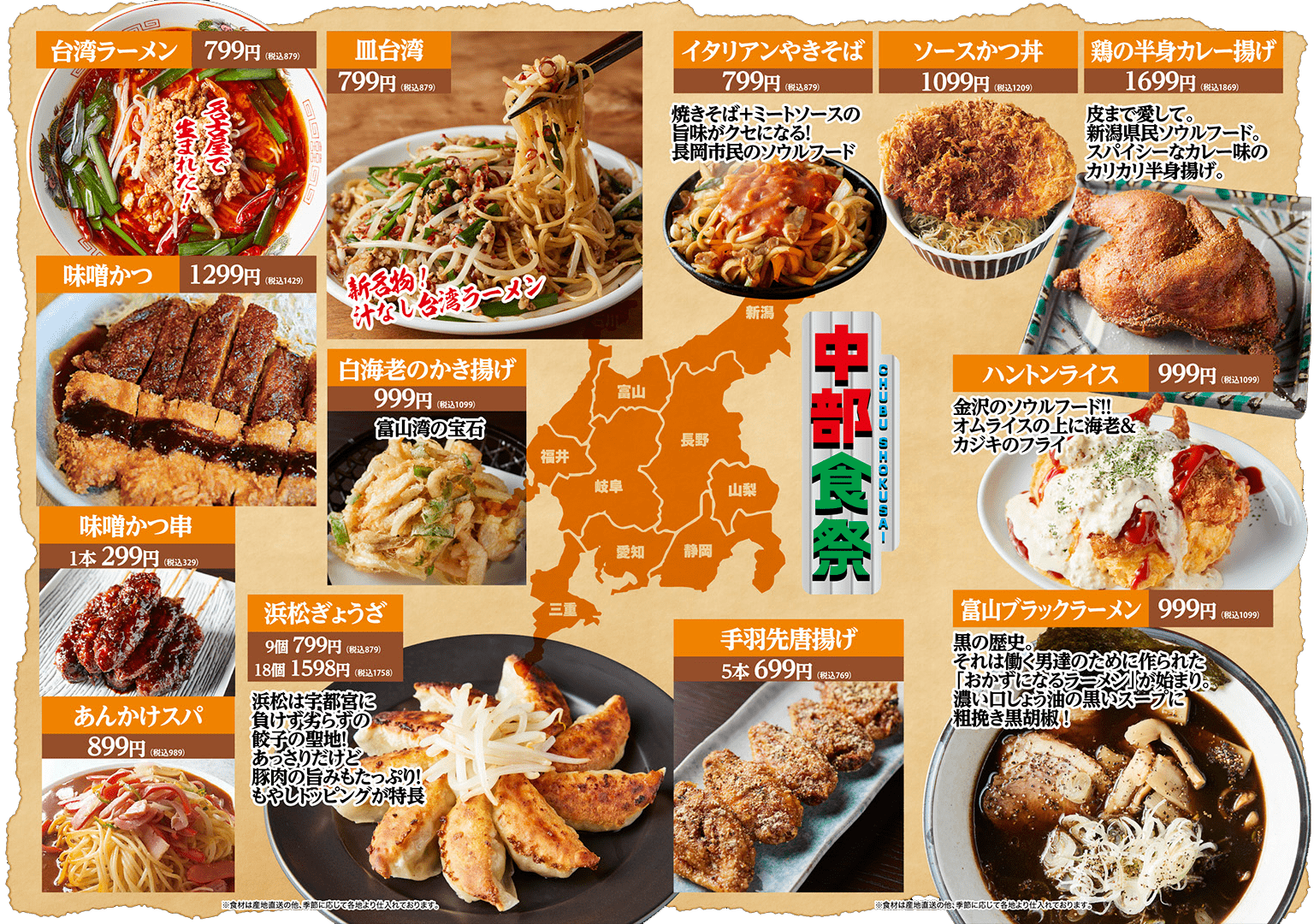
Local gourmet foods made with fresh, direct ingredients delivered directly from producers in the Hokuriku region allow visitors to fully enjoy the delicacies and characteristics unique to that region. Gourmet food in Hokuriku ranges from traditional dishes to new favorites, and the richness of its variety is what makes it so appealing.
First of all, Nagoya-meshi, such as masumi, miso katsu, fried chicken wings, and ankake spaghetti, is loved by many people as a royal local delicacy. Masumi is characterized by its deep, rich flavor, and Miso Katsu is a perfect match for the juicy cutlet with its special miso sauce. The fried chicken wings are a dish where the crispy outside and juicy inside can be enjoyed, and the spaghetti with starchy sauce is characterized by its unique texture.
Furthermore, a unique Hokuriku delicacy is Toyama’s kakiage (deep-fried white shrimp). Shiroebi is characterized by its translucent appearance and sweetness, and its flavor can be fully enjoyed by making crispy kakiage. Also, Toyama Black Ramen is not to be missed. It features a rich soy sauce-flavored soup that has an unforgettable impact once tasted.
Hanton Rice is a local gourmet dish that is gaining attention and is rapidly gaining popularity. Served mainly in Kanazawa City, Ishikawa Prefecture, this dish consists of fried white fish and omelette on top of ketchup rice, topped with tartar sauce, and is attracting attention for its volume and taste.
Hokuriku’s local delicacies are not limited to these dishes. There is a wide variety of dishes using fresh seasonal ingredients, traditional local dishes, and even newly created dishes. At each market, eatery, and restaurant, visitors can enjoy unique flavors that reflect the local climate and culture, providing an unforgettable culinary experience.
These local delicacies are complemented by sake and other beverages that are unique to the Hokuriku region. There is a wide selection of sake and local beer, each with its own distinct regional flavor, as well as locally loved soft drinks. Enjoying dishes made with delicious Hokuriku ingredients along with these drinks will further enhance your experience of the region’s charms.
Kinki Food Festival
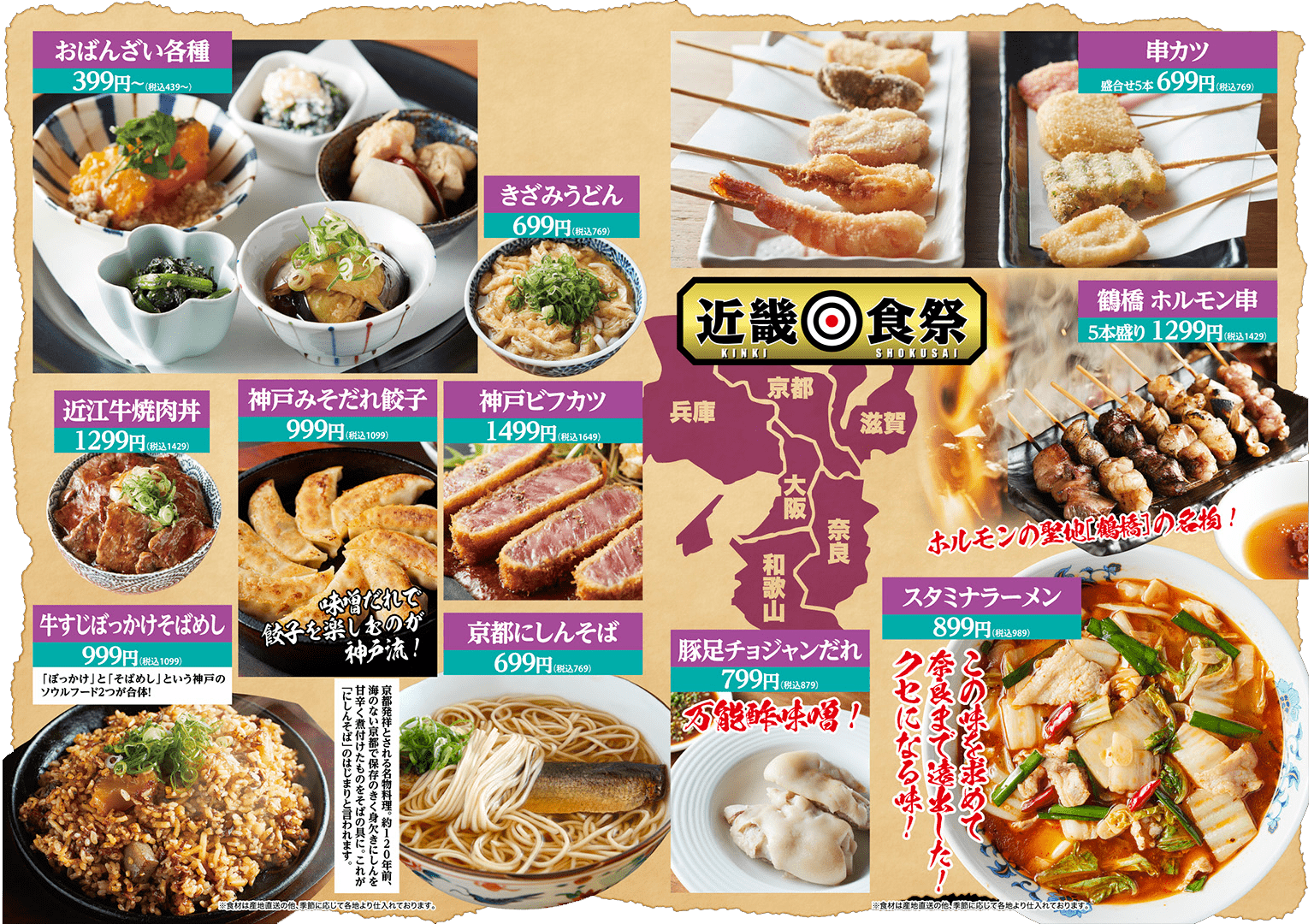
Local cuisine using fresh, directly produced ingredients delivered directly from producers in the Kinki region is full of flavor and reflects the culture and traditions of the area. The Kinki region is rich in history and climate, with Kyoto, Osaka, Nara, Hyogo, Shiga, and Wakayama each nurturing its own unique gastronomy.
First, there is obanzai, a typical local cuisine of Kyoto. Obanzai is a general term for home cooking using Kyoto vegetables and local seasonal ingredients, and is characterized by its simple yet profound flavor. Served in colorful small bowls, obanzai are beautiful to the eye, and the appeal of obanzai is that you can enjoy a variety of tastes little by little. Also, kitsune udon with plenty of kujo leeks is a gourmet dish from Kyoto, where sweet and spicy fried bean curd and fragrant leeks are a perfect match.
Next, Osaka’s B-class gourmet food is also not to be missed. Osaka’s okonomiyaki is a fluffy batter filled with cabbage, pork, seafood, and other ingredients, baked to perfection and flavored with sauce, mayonnaise, and dried bonito flakes. Kushikatsu is characterized by its crispy batter and juicy ingredients, and is eaten in Osaka style by dipping it generously in a special sauce. Another gourmet delicacy is Tsuruhashi’s horumon kushits, fresh hormone skewers grilled on skewers and seasoned with a unique sauce.
In addition, there is a wide selection of drinks to complement these dishes. The Uji Matcha High, made with Kyoto’s Uji matcha green tea, is a perfect blend of the rich flavor of matcha and refreshing alcohol. Also popular in Osaka is the Mikkusu High, an easy-to-drink cocktail combining fruity juices and alcohol, perfect for enjoying with a meal.
In addition to these dishes and drinks, the Kinki region is home to numerous other fascinating food cultures. For example, one should not miss out on the local specialties such as Kakinoha sushi from Nara, Tajima beef from Hyogo, funazushi from Shiga, and umeboshi (pickled plums) from Wakayama. These local dishes and specialties, nurtured by the rich nature and long history of the Kinki region, will provide visitors with unforgettable tastes.
In this way, the local produce and local cuisine delivered from producers in the Kinki region allow visitors to enjoy the unique delicacies of the area and to fully appreciate the charm of the region. From casual B-class gourmet cuisine to traditional Kyoto cuisine, spending time with a variety of cuisines is sure to be a special experience for visitors.
Chugoku-Shikoku Food Festival
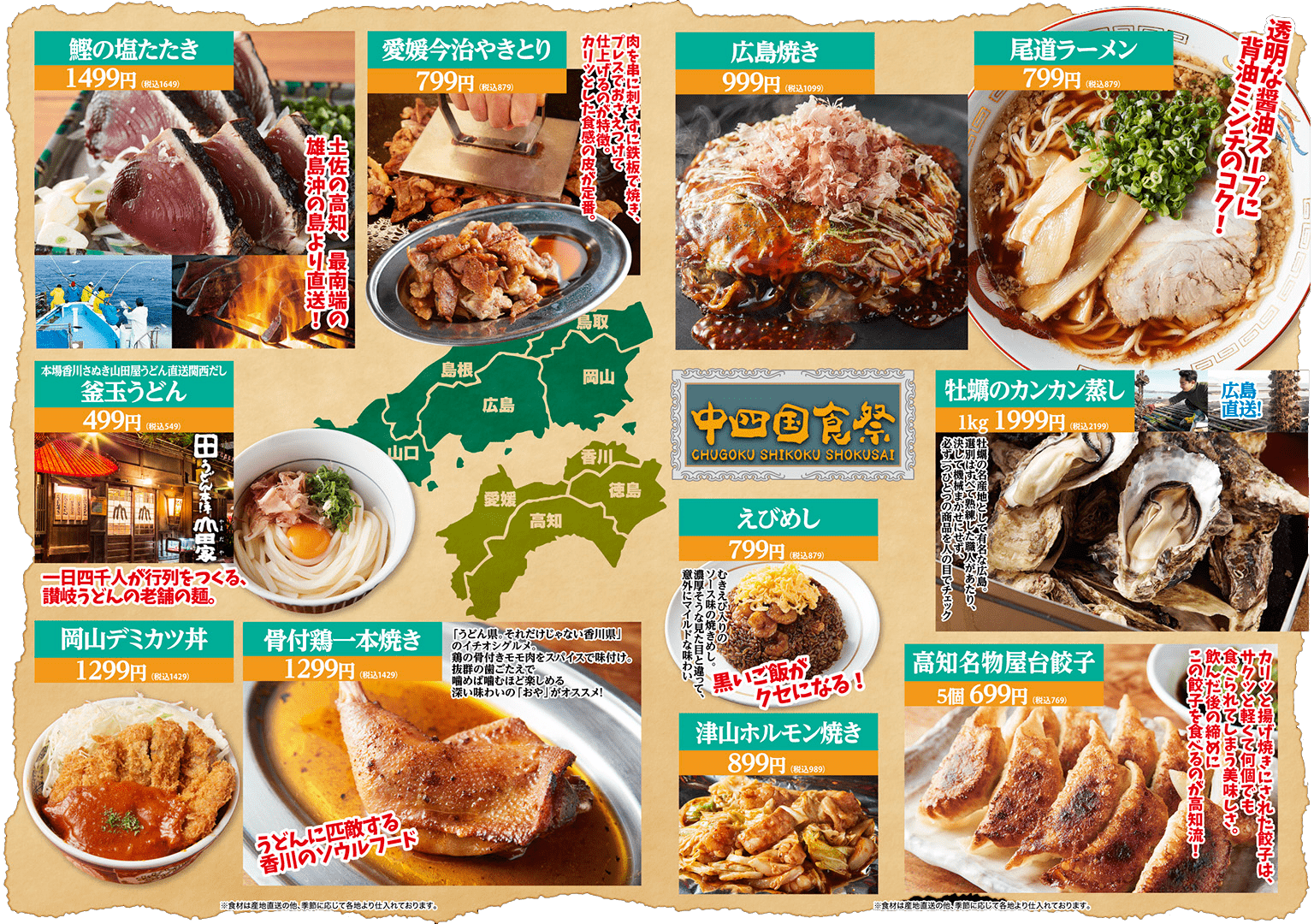
The fresh ingredients delivered directly from producers in the Chugoku and Shikoku regions, as well as the unique local cuisine of each region, are all exquisite and allow visitors to experience the culture and climate of the area. The Chugoku and Shikoku region includes the nine prefectures of Hiroshima, Okayama, Yamaguchi, Tottori, Shimane, Kagawa, Tokushima, Ehime, and Kochi, each of which has a diverse regional food culture.
First, Hiroshima okonomiyaki is known as the representative local cuisine of Hiroshima. Hiroshima okonomiyaki is characterized by the style of layering a generous amount of ingredients such as cabbage, bean sprouts, pork, and seafood onto the dough, and adding soba or udon noodles at the end. The slow grilling on the teppan gives the okonomiyaki a crispy outside and fluffy inside. Also, canned steamed oysters made with Hiroshima oysters are a luxurious dish in which fresh oysters are placed in a can and steamed to lock in their flavor.
And don’t forget about Onomichi ramen. Onomichi ramen is characterized by a simple but deep flavor, with back fat floating in a soy sauce-based broth. The noodles are medium-fine and straight, and are a perfect match for the soup.
In Kochi, straw-roasted bonito made from fresh bonito shipped directly from fishermen is very popular. The surface of the bonito is boldly seared with straw to bring out its savory and unique flavor, making bonito tataki a taste unique to Kochi. Sanuki udon noodles from Kagawa Prefecture are characterized by their firm texture and clear broth, and udon noodles made by long-established noodle shops are known for their rich flavor.
Furthermore, bone-in chicken, known as Kagawa Prefecture’s soul food, is juicy and satisfying, with its spicy seasoning and slow-cooked chicken meat. Ehime Prefecture’s Imabari Yakitori is also unique, with a crispy outside and juicy inside thanks to the pressing of the chicken on a teppan grill.
The Chugoku and Shikoku region also offers a wide variety of drinks. The Setouchi Lemon Sour, with its refreshing lemon aroma and sour taste, goes well with all dishes. Kochi’s local sake, “drunken whale,” is popular for its clean taste and sharp aftertaste, and goes especially well with fish dishes.
In this way, you can fully enjoy the unique characteristics of the region with foodstuffs and local cuisine delivered directly from producers in the Chugoku and Shikoku regions. By tasting a variety of dishes and drinks, such as Hiroshima okonomiyaki, Onomichi ramen, steamed oysters, Kochi bonito grilled in straw, Kagawa Sanuki udon, chicken on the bone, and Imabari yakitori, you will be able to experience the rich food culture of the Chugoku and Shikoku regions.
Kyushu-Okinawa Food Festival
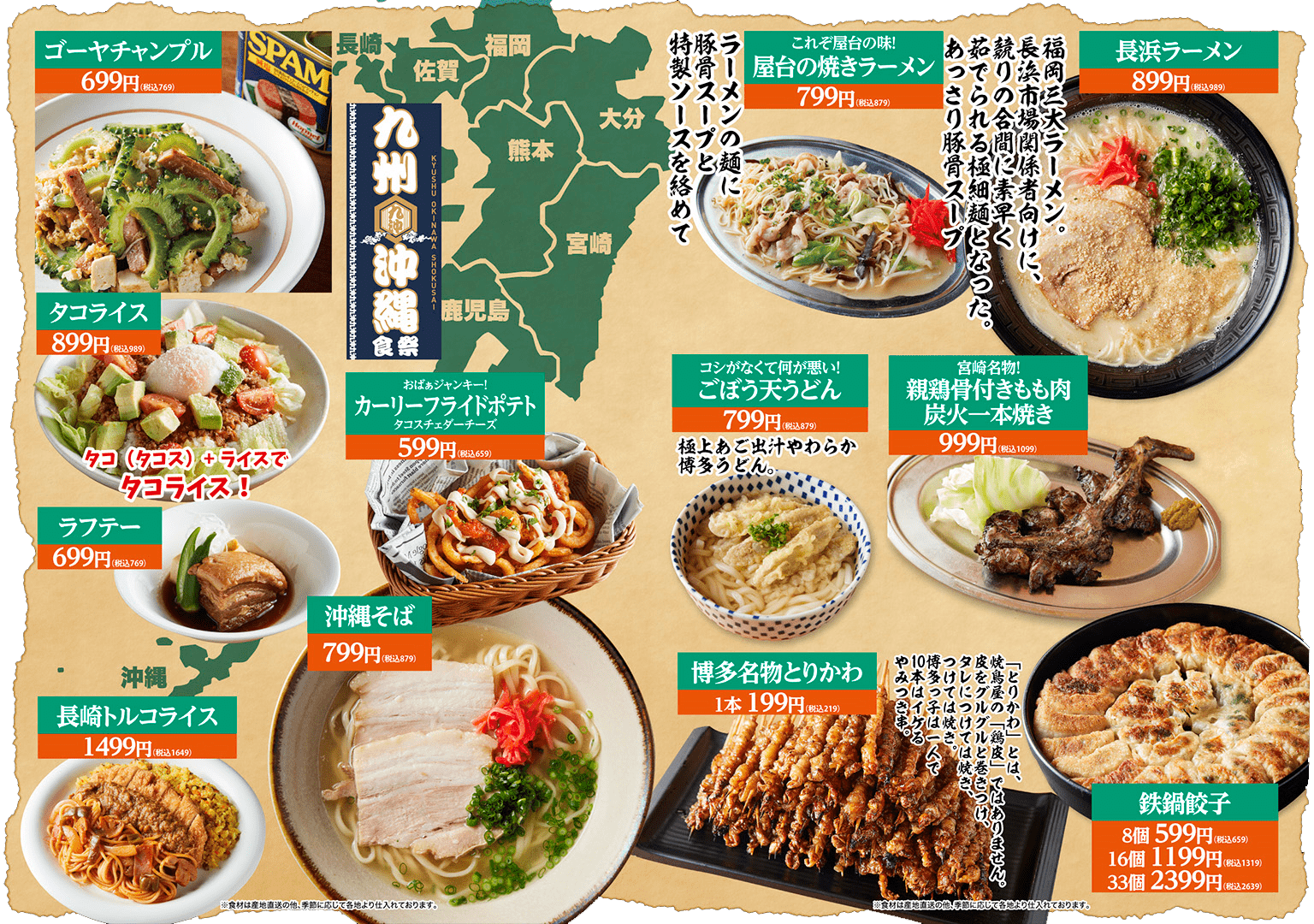
Fresh produce and local gourmet foods delivered directly from producers in Kyushu are full of rich flavors and attractions unique to the region. Kyushu and Okinawa are areas that have nurtured diverse culinary cultures, each with its own unique cuisine.
First, Nagahama ramen is a typical local delicacy in Fukuoka. Nagahama ramen is characterized by the rich flavor of its pork bone broth and thin, straight noodles, and is a symbol of Fukuoka’s ramen culture. Tetsunabe gyoza is also popular for its style of serving gyoza, crispy on the outside and juicy on the inside, in a hot iron pot. A wide variety of other Hakata meshi dishes are also available, such as torikawa, a crispy fried chicken skin, and Hakata udon noodles with a soft texture.
The Miyazaki Chicken Nanban is a hearty and delicious dish of juicy chicken topped with sweet vinegar and tartar sauce. Miyazaki spicy noodles, with its spicy broth and chewy noodles, is also an excellent dish with a spicy flavor.
Okinawan cuisine is also an integral part of Kyushu’s food culture. Okinawa soba has a nostalgic flavor, with a gentle broth made from pork bones and dried bonito flakes and thick, flat noodles. Goya Chanpuru is a healthy dish of fried bitter melon, tofu, and pork, with a unique bitter taste that is addictive and delicious. Taco rice is a hearty soul food, a Mexican rice dish originating in Okinawa with taco ingredients on top of rice.
In addition, ilabuu (sea snake), an extremely rare Okinawan foodstuff, is considered to be an ingredient for longevity and is characterized by its rich and flavorful taste. Irabu is stewed in a traditional way and is a precious dish that is often served at special occasions.
Speaking of Kyushu, we must not forget the presence of shochu. There are many types of shochu produced throughout Kyushu, including potato shochu, barley shochu, and rice shochu, each with its own unique flavor. In particular, Kagoshima’s potato shochu is popular for its rich aroma and deep flavor. Awamori is also an essential part of Okinawa. Awamori is a distilled liquor made from Thai rice, which is aged for a long time to give it a mellow and full-bodied flavor.
Thus, Kyushu and Okinawa offer a diverse menu of local gourmet foods and produce, nurtured by the rich nature and climate of the region. From Hakata meshi such as Nagahama ramen, iron pot gyoza, torikawa, and Hakata udon, to royal gourmet dishes such as chicken nanban, Miyazaki spicy noodles, Okinawa soba, bitter gourd stir-fry, and taco rice, and even rare Irabu cuisine can be enjoyed. And by tasting them with Kyushu’s shochu and Okinawa’s awamori, you will be able to fully enjoy Kyushu-Okinawa’s culinary culture.
Korean Food Festival
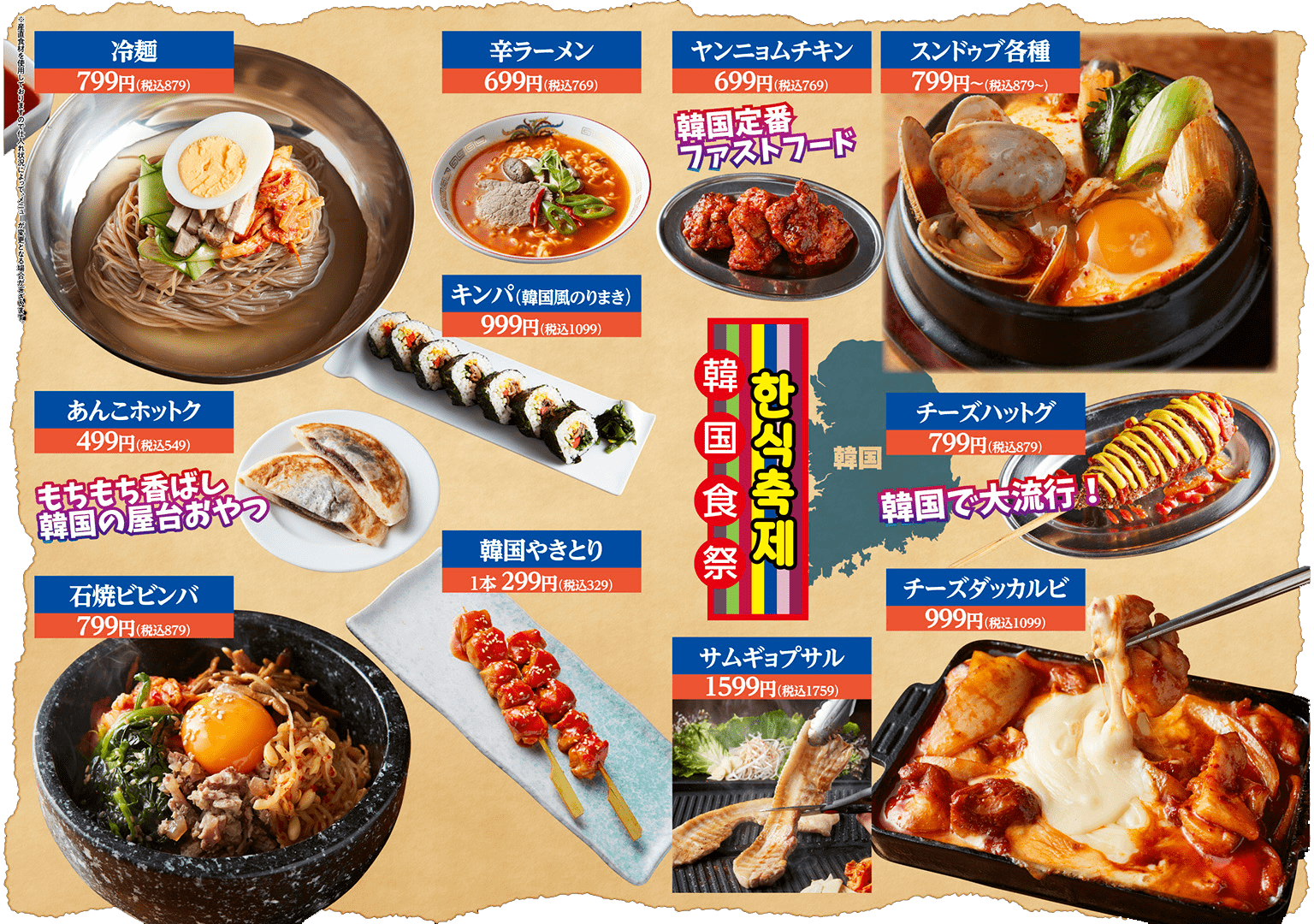
Korean cuisine! If you are looking for a taste of authentic soul food, there are many attractive options to enjoy a wide range of menu items. Korean cuisine attracts food lovers from all over the world with its rich flavors and diverse ingredients.
First of all, samgyeopsal is known as the royal roadmap of Korean cuisine. Samgyeopsal is characterized by thickly sliced pork belly that is grilled and wrapped in sunchu (a small piece of meat wrapped in a thin sheet of paper) with vegetables and condiments. The sizzling sound and savory aroma of the meat whet your appetite, and you can enjoy the variety of flavors with different seasonings and sauces. Sundubu jjigae is a spicy soup dish made with soft tofu that warms the body from the inside out. Filled with seafood, pork, and vegetables, Sundubu jjigae is widely loved as a typical Korean soup.
In addition, you should not miss Korean B-grade gourmet food. Jukmisamgyeopsal is a dish of stir-fried squid (jukmi) and pork belly (samgyeopsal) together, and its spicy seasoning is addictive and delicious. It is popular as a Korean street food and goes well with beer or soju. Hotteok is a sticky pancake filled with sweet syrup and nuts, perfect for enjoying as a dessert. Warm hotteok is the perfect sweet treat for cold winter days.
These dishes are handmade and served by expert artisans, allowing you to enjoy the authentic taste of Korea in a casual setting. The artisanal techniques of the Korean cuisine make the most of the flavors of the ingredients, and the seasonings and cooking methods are carefully selected. Served in a family-like atmosphere, the appeal of these dishes is that anyone can easily experience the authentic taste of Korea.
In addition, the unique Korean drinks complement the Korean cuisine even more. Makkori is a traditional cloudy liquor made from fermented rice, characterized by its subtle sweetness and fizzy taste. Chamisul is a typical Korean soju whose clear taste and refreshing aftertaste go well with food. Baeksaiju is a health drink made from medicinal herbs and fruits, with a unique flavor and aroma. These drinks can be enjoyed with Korean cuisine to enhance the dining experience.
Thus, if you want to enjoy authentic soul food, you will find a wide range of menu items from royal gourmet such as samgyeopsal and sundubu jjigae to the latest Korean gourmet such as jukmimi samgyeopsal and hotguk. Enjoy these dishes, handmade by artisans specializing in Korean cuisine, along with Korean drinks such as Makkori, Chamisul, and Baeksaiju, and you will fully appreciate the authentic taste and atmosphere.
KABUKI CAFE
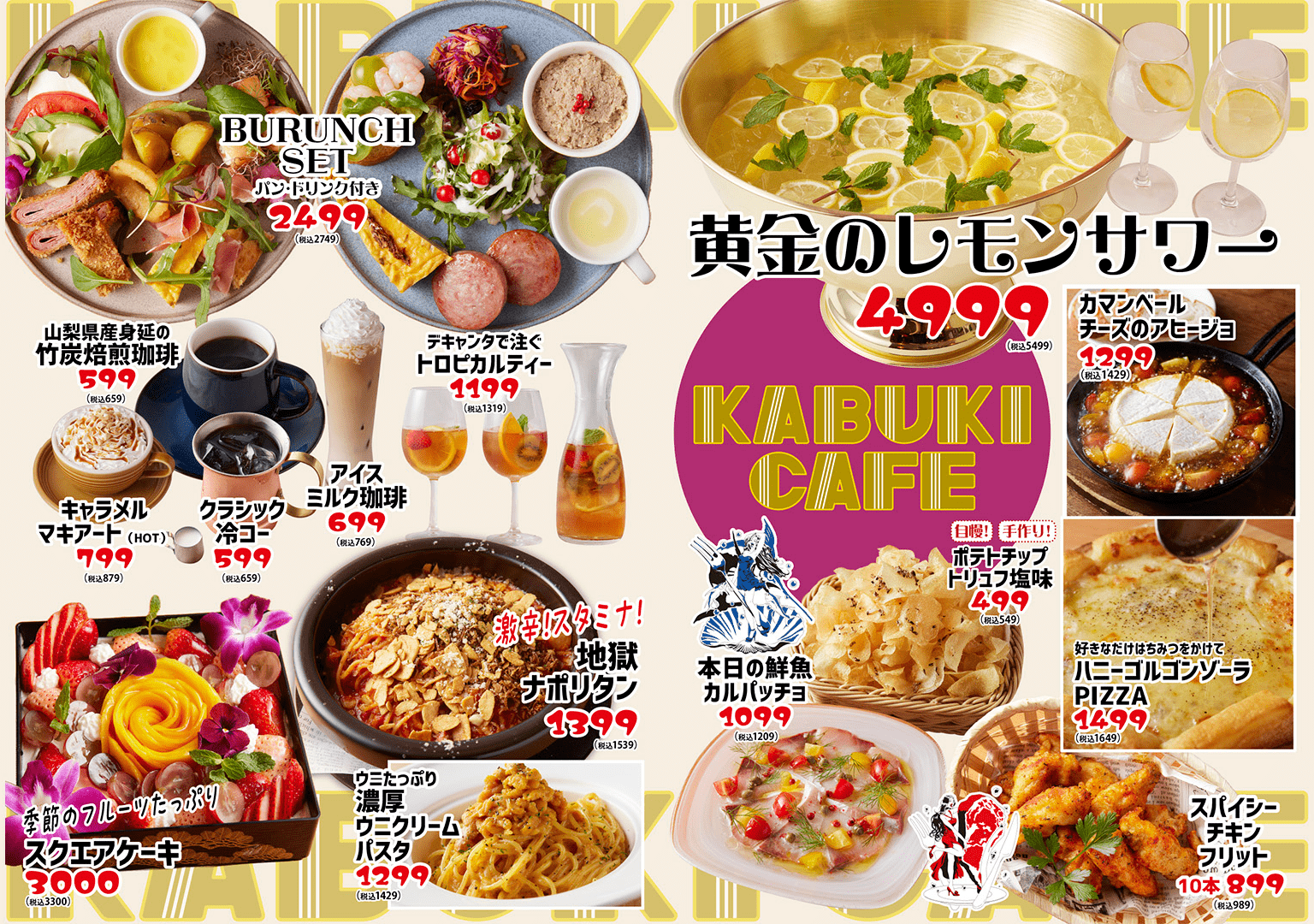
A frank café that you will want to stop by several times a day, KABUKI CAFE is a great place to visit at any time of the day and is perfect for a variety of occasions. Open from early in the morning, this café is the perfect place to enjoy aromatic coffee with fresh croissants and freshly baked bread during morning hours. Spending a quiet morning here will give you a fresh start to your day.
Or enjoy brunch for a late breakfast or early lunch. The brunch menu features healthy and satisfying dishes such as hearty eggs benedict, avocado toast, and fruit-filled pancakes. You can spend a relaxing time with friends and family.
In the afternoon, we also recommend using the restaurant as a coffee break. With home-roasted coffee, a wide variety of teas, and homemade sweets, it is the perfect place to relax, read, or work. The café’s relaxed atmosphere allows you to take a break and refresh yourself.
In the evenings and at night, the café transforms into a lively bar-style setting. It is the perfect place for a drink with friends or a quick drink after work. The evening menu features a wide selection of champagnes and original cocktails, each one filled with the bartender’s specialties. Casual Italian cuisine can also be enjoyed, so you can have a good time while sharing delicious pizza, pasta, antipasto, and other dishes.
The atmosphere is especially lively at night, when many people gather here as a kabuki-style hangout. It is also popular as a place where local regulars and tourists mingle and where new encounters and conversations are born. With its casual yet stylish interior and soothing music, this café is worth a visit at any time of the day.
Thus, this frank café is a place you will want to stop by several times a day, and has a variety of attractions that can be enjoyed depending on the occasion: morning, brunch, coffee break, and bar time in the evening. From morning to night, this café can be visited at any time of the day and enjoyed in a way that suits your style, providing a little something special in your everyday life.
